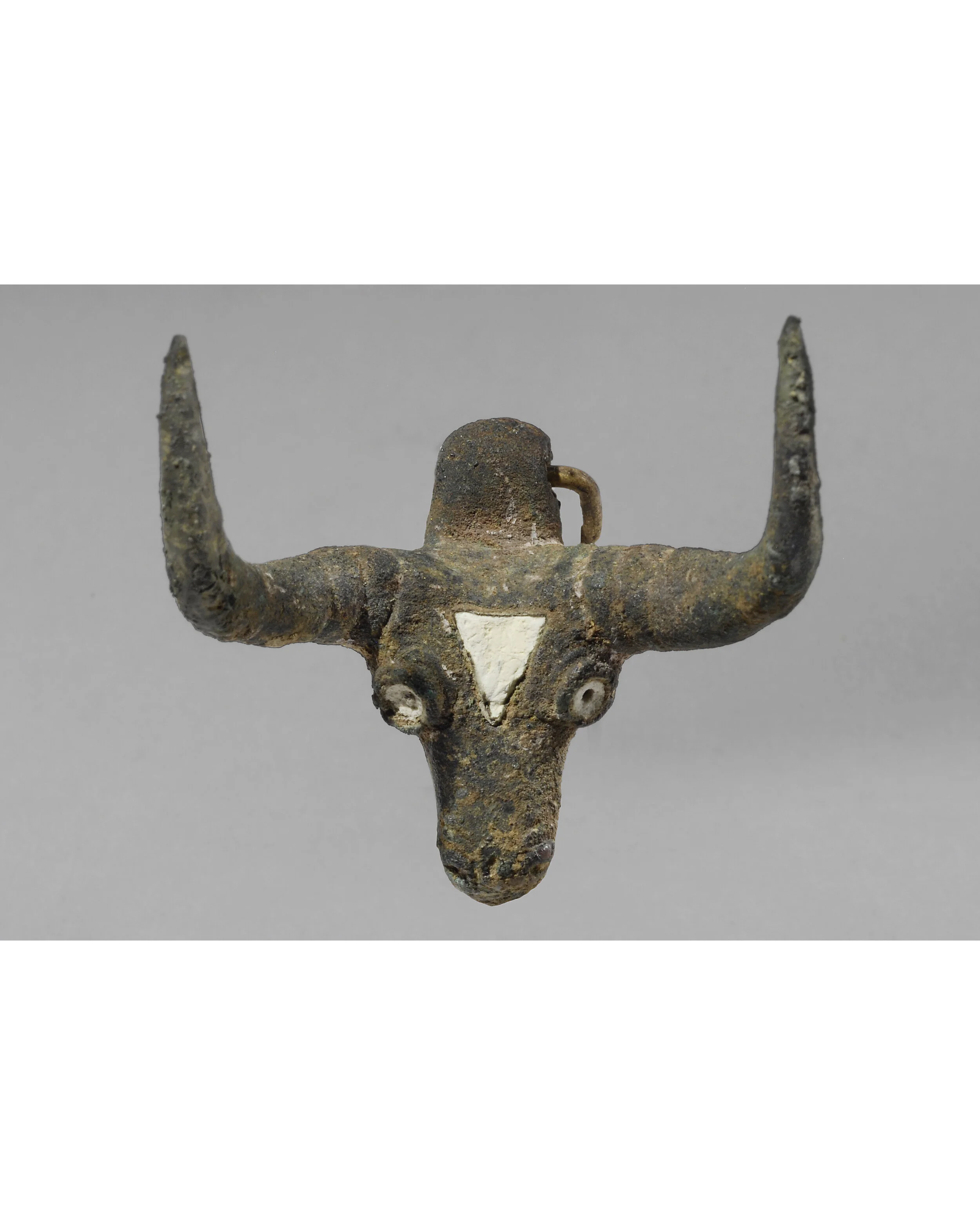Ancient Anatolian Silver Votive Figure of a Ram
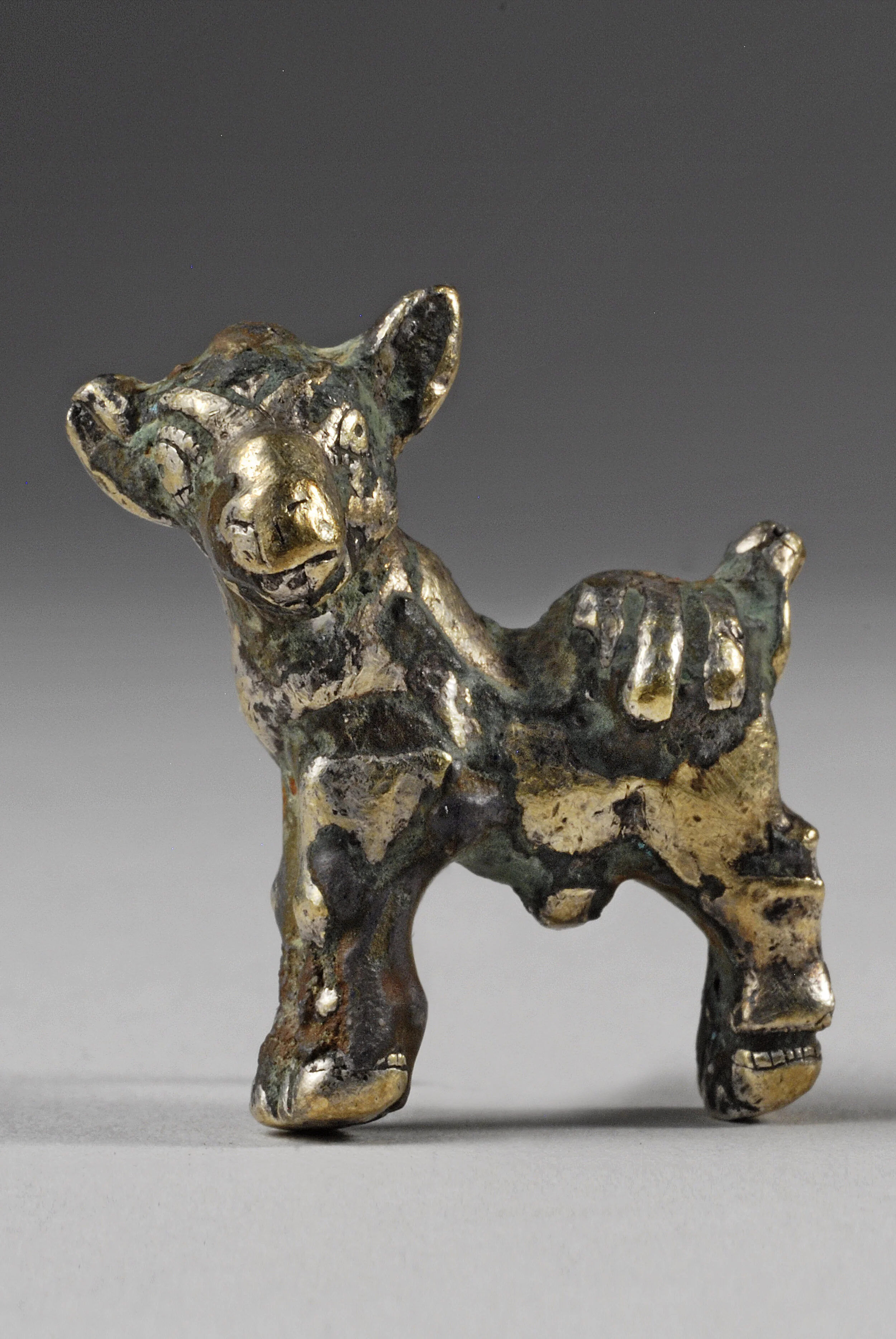

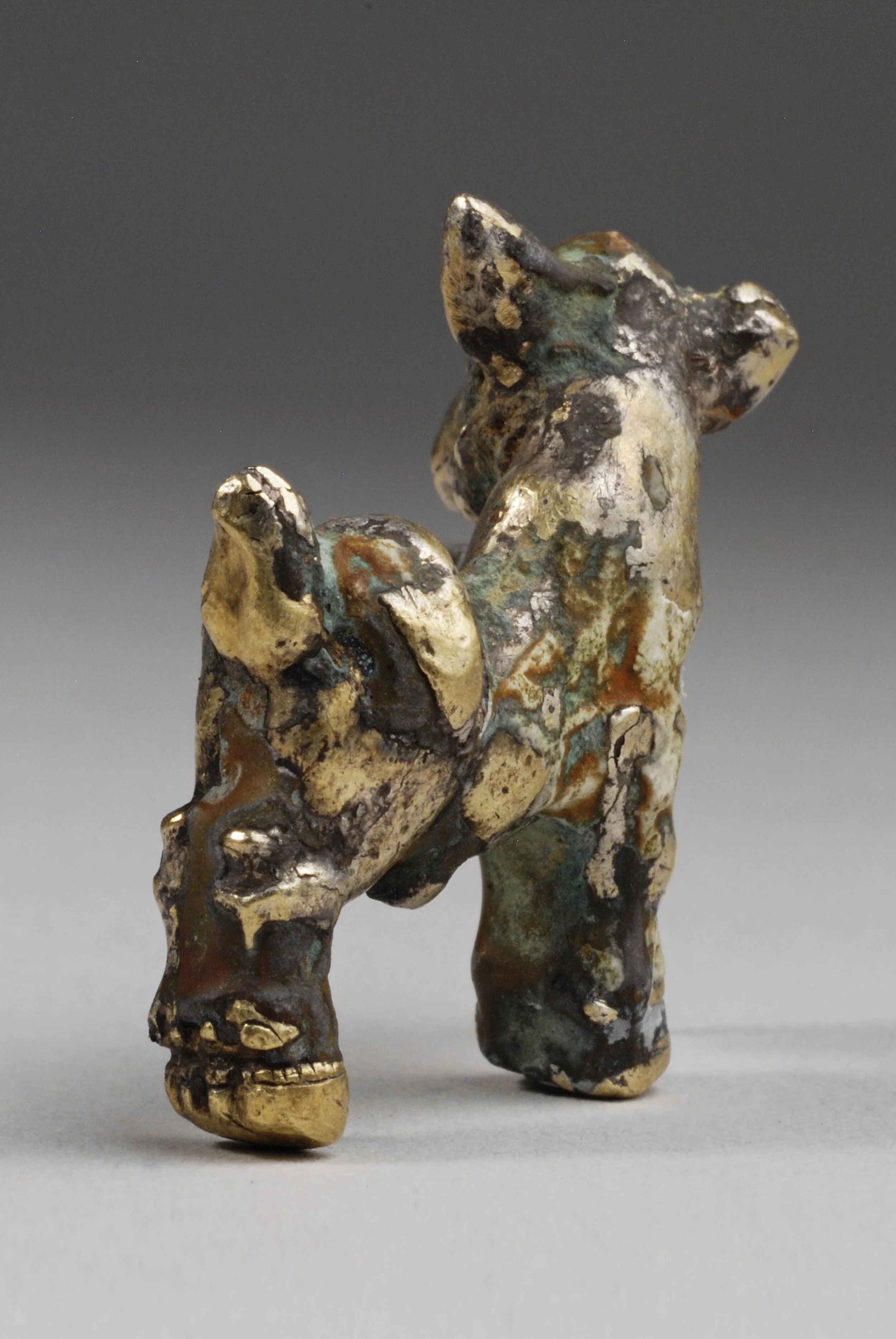
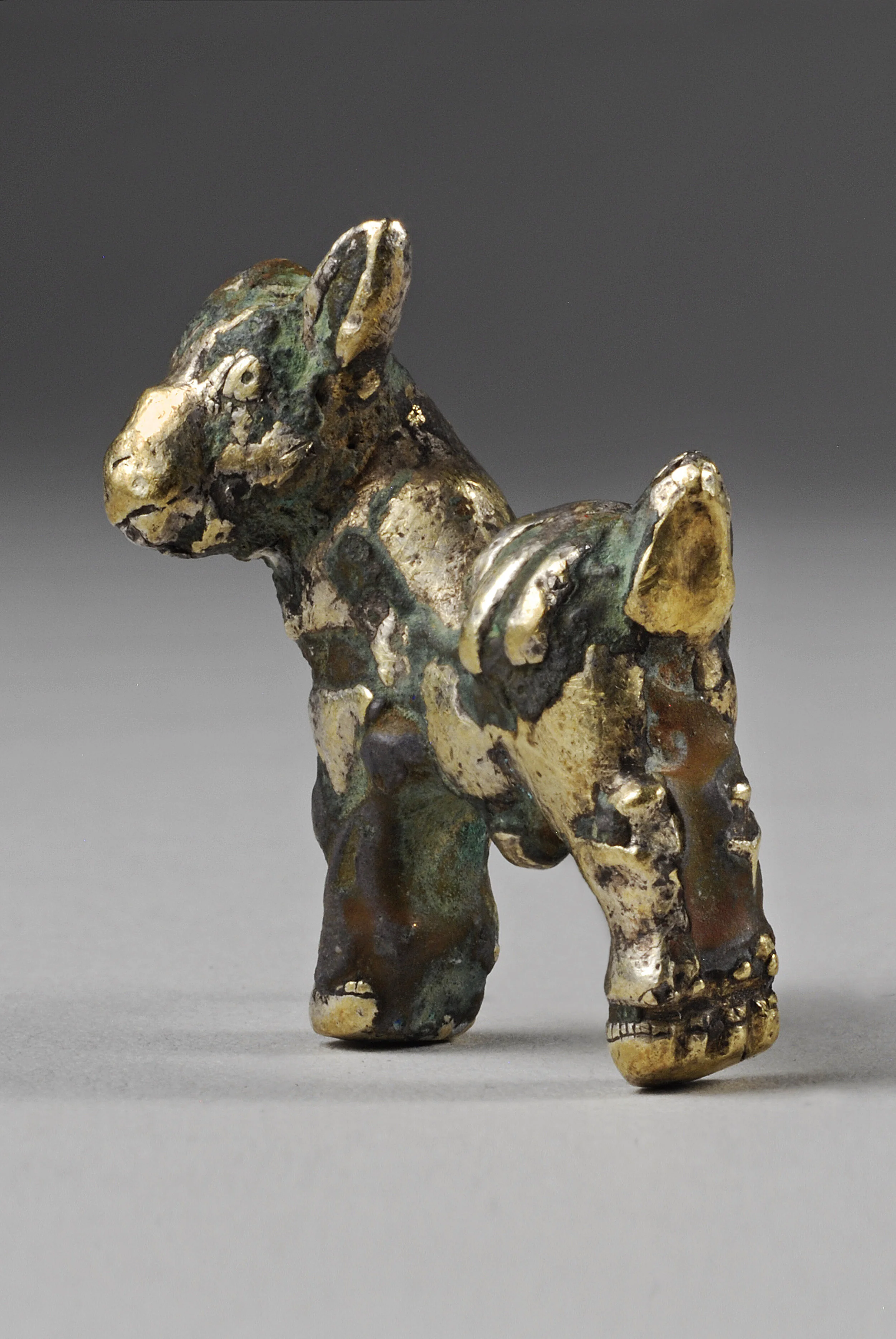

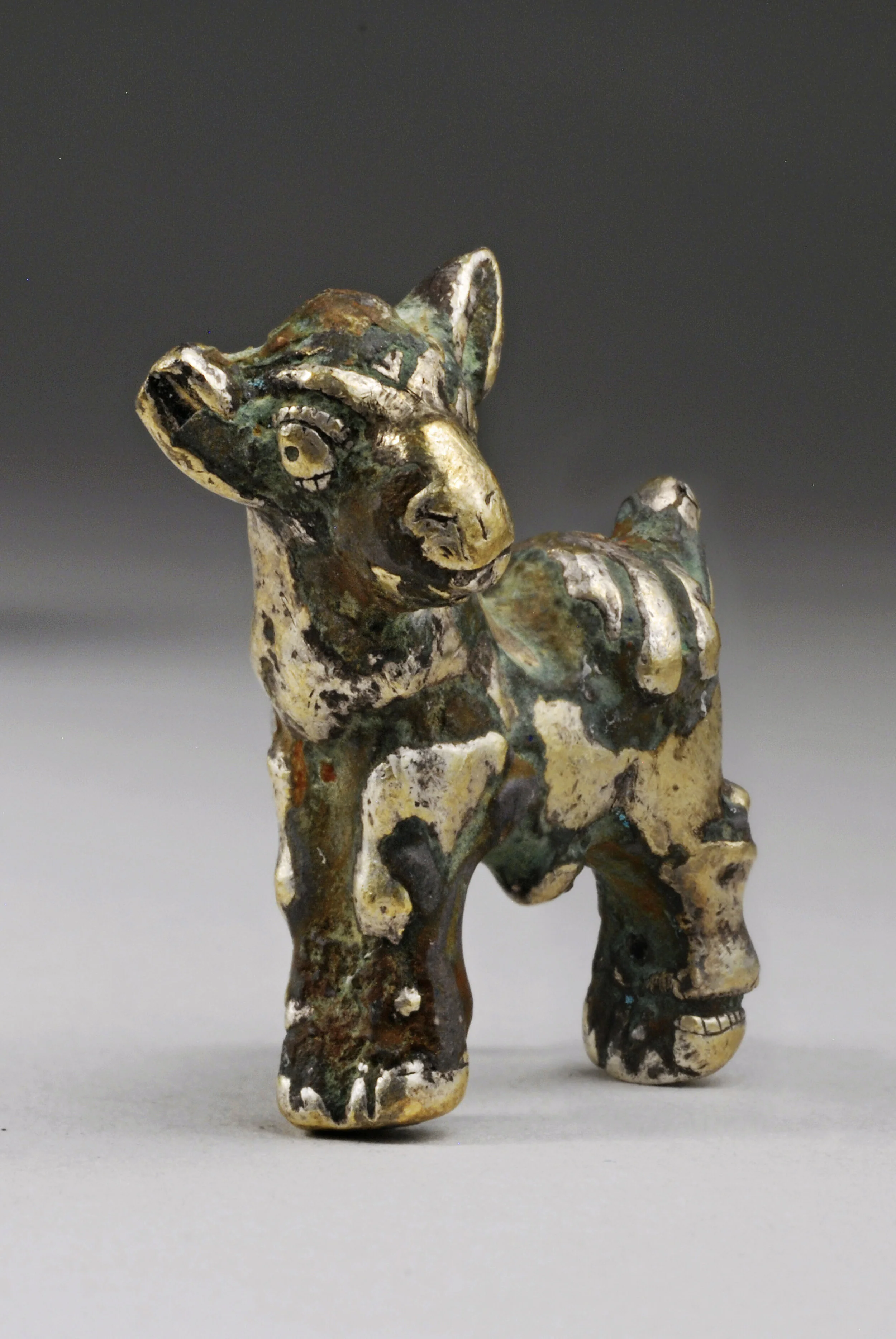
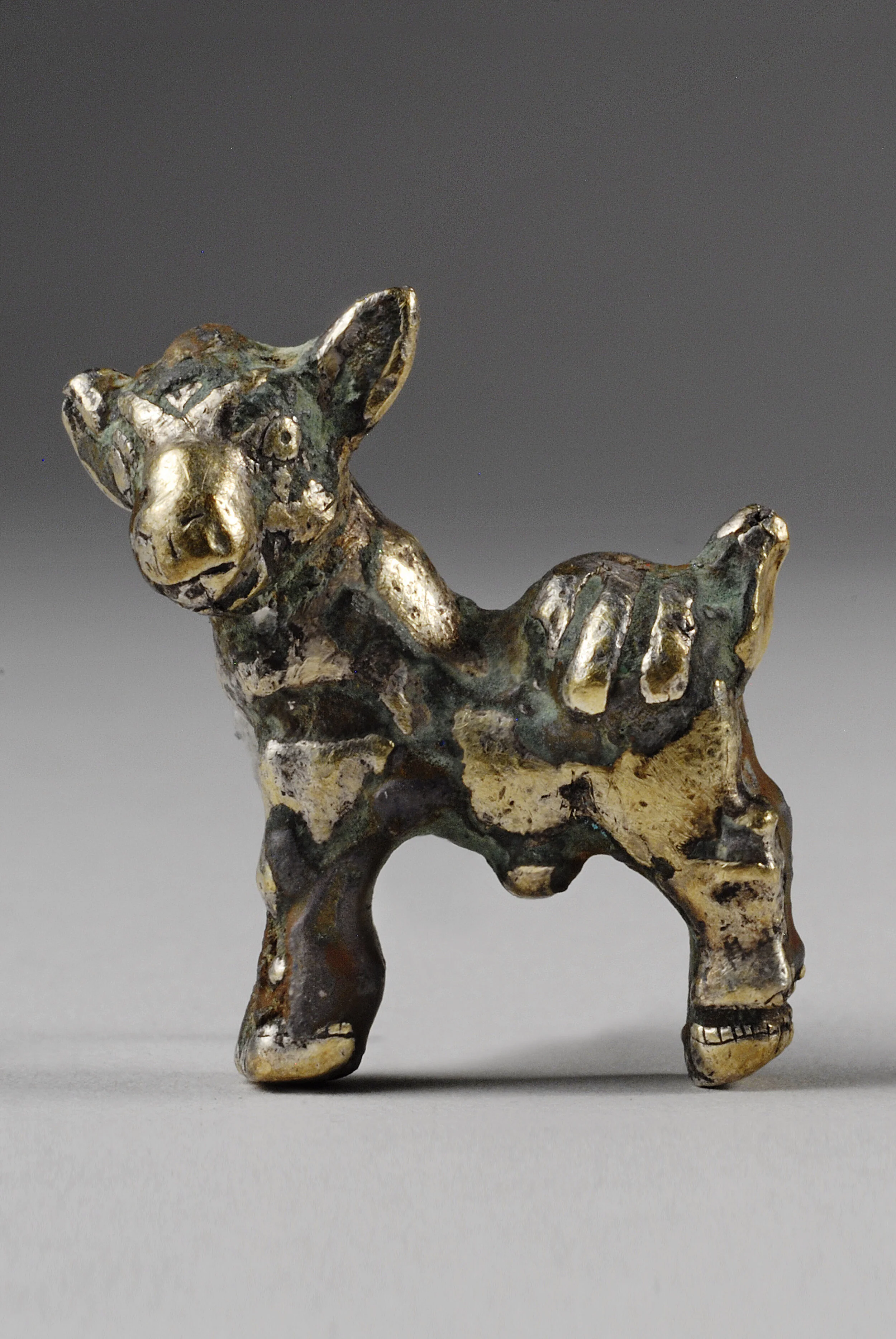
Ancient Anatolian Silver Votive Figure of a Ram
Anatolian, 3rd millennium B.C.
Silver
H: 2.85 cm W: 2.4 cm
PROVENANCE: Ex- European Private Collection
SERIAL NO: 4202
This rare, early-dating figure of a ram – made of a precious metal – is all the more valuable considering the fine details of the animal’s anatomy, which are indicated in spite of its small size. The ram’s head turns to face the viewer while its body is presented in profile. This is an innovative departure from the standard pose in which the head of the animal faces forward and is in line with the body, a form usually taken by figures at this early date. The ram’s face is animated with expressive almond –shaped eyes surrounded by a row of raised dots, with each eye enlivened with the addition of a punched dot to indicate the pupil; the nostrils, nose, and mouth on the muzzle of the ram are also indicated; well-formed ears extend out from the head. The animal stands attentively on its front and back legs, each pair of which was designed to be joined together, thus making the figure more stable and able to stand securely. The cloven hooves of the ram have the hair along their upper edges indicated by a row of raised dots. The upturned tail of the figure lends an additional spirit of liveliness to the animal.
From the period of the earliest civilizations in the Near East, and for centuries afterward among Mediterranean cultures that included Greeks and Romans, animal figures like the ram, along with bovine animals, served as ritual votives and thus took the place of the actual animals sacrificed in a religious setting. Unlike the ritual sacrifice of living animals where the offered animal is destroyed, a votive animal figure stands as a permanent testimony to the dedicant’s request or thanks. One function of temples and sanctuaries was to house such expensive dedications. Most extant votives are made of a less valuable material such as terracotta or bronze. The composition of this votive animal made of silver signifies its greater importance to the god or sanctuary where it was offered, as well as a greater expense for the person or persons offering such a votive. Votive offerings were voluntary dedications to the gods and not prescribed by ritual calendars but rather by individuals or communities usually during periods of anxiety or transition, or in thanks for a certain achievement. Votives dedications were also made to insure the fertility of the flocks and herds, or in thanks for such abundance.







